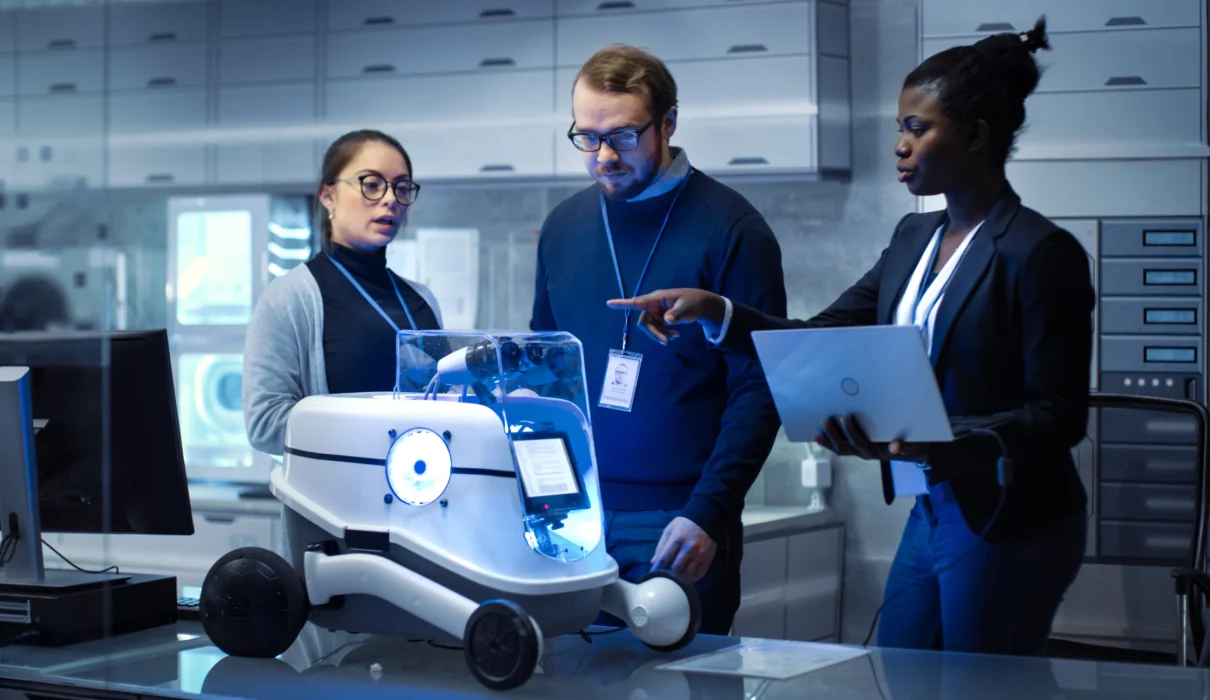Robotic programming plays a critical role in industrial automation, enabling machines to perform complex tasks with precision and efficiency. However, to fully optimize the functionality of a robot, it’s crucial to understand how to add inputs to jobs in robot programs. Inputs, whether from sensors or manual controls, act as signals that guide robotic actions, making them more adaptive and intelligent in a dynamic environment.
This guide will provide a step-by-step explanation for adding inputs to robot programs. Whether you’re an automation engineer, technician, or enthusiast, you’ll learn how to seamlessly integrate inputs into your programs while ensuring precision and safety. We’ll also explore frequently asked questions and share pro tips to enhance your understanding of the process.
Why Are Inputs Important in Robotic Programs?
Before we jump into the steps, it’s worth understanding the significance of inputs in programming robot jobs. Inputs are signals or prompts received by the robot’s controller. Key examples include:
- Sensor data like detecting objects or temperature variations.
- Manual triggers initiated by operators for certain tasks.
- System events such as safety stops or process completions.
These inputs make robots reactive and responsive to their surroundings. They also help achieve better coordination in multi-robot setups or when robots work alongside humans.
Preparing to Add Inputs to Jobs
Before adding inputs to jobs, ensure you have completed the necessary preparatory steps to avoid any interruptions during the process.
#1: Familiarize Yourself With the Robot Controller
Every robot brand has a unique controller interface—whether it’s FANUC, ABB, Yaskawa, or KUKA. Read the controller’s manual to understand its specific input/output (I/O) configuration. Look for the I/O interface or digital input module where you’ll assign inputs.
#2: Identify and Configure Your Inputs
Determine the type of input you’re adding. Is it:
- A digital input (on/off signals like limit switches)?
- An analog input (continuous data like speed or temperature)?
- A virtual input (software-based signals for simulations)?
Gather your hardware—connect sensors, switches, or input sources to the robot I/O ports. Ensure proper wiring and verify connections using tools like voltmeters.
How to Add Inputs to Jobs in Robot Programs
Now, onto the hands-on steps! Below is a general framework you can follow (specific steps may differ based on the robot manufacturer’s software).
#1: Access the Teach Pendant
The teach pendant is your gateway to programming robot jobs. Power up the robot and open the teach pendant. Navigate to the programming interface where jobs are listed.
#2: Configure the I/O Settings
Head to the “Inputs/Outputs Settings” menu. This section allows you to:
- Map physical ports on your robot’s controller to signal channels.
- Assign names or labels, making inputs easier to identify later in your program.
For instance:
- Port 1 → Assigned to “Proximity Sensor”
- Port 2 → Assigned to “Operator Trigger”
#3: Define the Input Logic
Next, write logic for how your robot responds to the input. This is typically done using instructions in the programming language used by your robot (e.g., Karel, RAPID, or Ladder Logic). Example code snippets:
- For a Proximity Sensor Input Trigger
“`
If Proximity_Sensor == TRUE
Move_to_Pickup_Position
Else
Wait_For_Signal
EndIf
“`
- For a Manual Button Trigger
“`
If Operator_Trigger == TRUE
Start_Conveyor
Else
Stop_Conveyor
EndIf
“`
#4: Insert Input Control into the Job
Locate the job (robot task) where this input logic will come into play. Integrate the input control into the task sequence, ensuring the robot action is tied directly to the input signal.
For example:
- Before robot gripper closes, verify if the proximity switch detects an object.
- If no object is detected, pause the sequence and wait for further inputs.
#5: Test and Debug
Once integrated, it’s time for testing. Run the job in step mode to observe how the robot responds to the input. Check for the following:
- Signal detection accuracy.
- Timely robot reactions.
- Smoothness of the workflow.
Fix any errors or misconfigurations during this phase.
#6: Save and Deploy
After successful tests, save the updated program to the robot’s memory. Deploy it to operations and monitor behavior during the initial runs. Make adjustments if needed.
Pro Tips for Adding Inputs
- Simplify Input Labels for Clarity: Always use intuitive labels for your inputs (e.g., “Safety_Latch” instead of “Input_1”). This small step makes programming and debugging much easier.
- Back Up Your Program: Before making changes, back up your existing robot program. It prevents you from losing progress or unintentionally corrupting functional jobs.
Benefits of Adding Inputs to Jobs in Robot Programs
- Enhanced Efficiency
Dynamic inputs help robots adapt in real-time, reducing downtime and improving workflow.
- Improved Safety
Inputs from safety sensors (like light curtains or pressure mats) ensure the robot operates within secure parameters.
- Greater Flexibility
Inputs allow robots to perform varied tasks, making automated systems scalable and resourceful.
FAQs
Yes! Many robot controllers have virtual input features that allow you to simulate signals during development. This is helpful for debugging without connecting physical devices.
Basic programming knowledge is beneficial but not always mandatory. Modern robot programming interfaces, like drag-and-drop platforms, minimize coding complexity by providing graphical alternatives.
Most controllers have fail-safe mechanisms to handle input errors. For example, if a sensor fails, the system may execute a safety stop. Always test and validate input reliability during setup.
The number depends on your robot’s controller and I/O module capacity. Check your controller’s specifications for details.
Yes, robots can continuously monitor dynamic inputs, adjusting their operations accordingly.
Wrapping it Up
Understanding how to add inputs to jobs in robot programs empowers you to unlock your robot’s full potential. From enhancing task precision to enabling safer interactions, inputs are the invisible force driving smarter automation. Make sure to configure I/O settings correctly, define clear logic, and thoroughly test your program. By following this guide, you’ll be able to integrate inputs seamlessly, ensuring efficient and adaptive robotic operations.
Take full control of your robot programming workflow. Refine your skills, explore dynamic possibilities, and step confidently into the future of automation.







